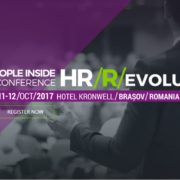The Time Has Come for the Career Portfolio
Ultimately, each employee is responsible for and owns their own portfolio. Unlike a job, a career portfolio can never be taken away. The past two and a half years have been a giant lesson in workplace flux. In any given week, month, or quarter, a new and often disruptive change emerges to knock leaders and organisations sideways. Regardless of whether or not a recession is on the horizon or the employer-employee power balance shifts, whipsawing change is here to stay. How can companies help talent thrive — at work and in life — regardless of what the future portends?
Employees today are fed up. People are antsy for something better (and sometimes, simply new). They want to be seen, valued, and listened to. They want equity, dignity, security, balance, flexibility, and autonomy. They expect opportunities for growth, learning, meaningful contribution, and fulfilment. This may sound like a lot, but if we’re striving to help them reach their full potential and leave the world a better place, it’s actually pretty modest.
For organisations and HR, however, navigating this landscape is fraught. Companies seek to win the “war for talent,” yet almost every aspect of the battlefield has changed. Many people are no longer interested in or inspired by climbing a career ladder that someone else built. There have never been more ways to earn income or create a meaningful career than there are today. The question is no longer “What do you do?” but rather “Who do you wish to be and become?” Talent attraction, career development, and professional identity are all in flux.
From ladder to portfolio
In recent years, more people have discovered that the best career paths aren’t always straight lines. Authors Helen Tupper and Sarah Ellis refer to these non-linear paths as “squiggly careers,” which are “full of uncertainty and possibility.” Squiggly careers offer lots of benefits, but squiggly can also be messy.
This is where HR leaders often get nervous. Even if HR is wholly supportive of updating talent models, how do you attract talent with — or design policies for — squiggles? At the same time, HR leaders are often concerned that introducing new career models will nudge people to reconsider too much…and leave.
A career portfolio approach solves these problems and takes career development to a new level. It’s not only a tool for individuals to rethink their professional identity and reach their full potential. It’s also an arrow in HR’s quiver. It’s a way to attract and engage talent meaningfully and excel as a company. When done well, it actually helps talent stay. (Counterintuitive solutions are often part of a world in flux.) Think of it as HR future-proofing for success.
Here’s how to get started enabling and encouraging career portfolios within your organisation.
Do your homework
The career portfolio concept was introduced in the early 1990s by organisational behaviourist Charles Handy, who focused on the need to develop “portable skillsets” to succeed in a fast-changing workplace. Since then, portfolios have sometimes been associated primarily with freelance work and having multiple roles at once. That is one kind of portfolio, but far from the only one — and not the one that HR leaders should be the most enthused about.
Today, a career portfolio is the container for a person’s professional adventure. It’s far more than a resume or CV. Of course, it includes jobs, roles, and professional skills — typical resume stuff — but it also includes experiences and skills that aren’t on a resume yet often drive everything else.
For example, parenting and career gaps aren’t typically included on a resume. In reality, these things tend to be actively avoided and even stigmatized in the worlds of hiring and HR. But they’re at the heart of a career portfolio, both because they power what a person does and because they bring out a person’s full self. Parenting skills are superskills for teamwork, conflict resolution, and human connection — all of which are at the heart of thriving workplace cultures. Career gaps are often when great growth happens. Rather than hiding these things, a career portfolio celebrates them.
It’s important to note that a career portfolio is not the gig economy. The gig economy offers flexible work that can be flipped on or off at the swipe of an app. While a career portfolio also allows for significant flexibility (and gigs may be part of your portfolio), it’s focused on curating a portfolio of skills and services and future-proofing a career. It’s about intentionally creating and curating a career that changes and evolves over time.
For organisations, a portfolio approach harnesses the full potential of talent. It sees people for who they are — which is exactly what talent is clamoring for. Not being “seen” is why a lot of people are leaving. Furthermore, companies that help employees develop their portfolios — rather than merely climb a ladder — identify and unlock skills that had been hidden, create new avenues for internal mobility, catalyze creativity, and expand opportunities for leadership. You’re investing in professional and personal growth alike. You don’t see talent merely as employees performing a role, but as human beings capable of so much more.
Today, “climbing a ladder” is the career equivalent of “but this is how we’ve always done it.” In other words, it’s in dire need of a refresh. What got us here won’t get us there. We need models and narratives that are open to change, not impervious to it, and fit for a world in flux.
Shifting to a career portfolio lens offers an opportunity to update individual professional narratives. Equally powerful, it’s also a practical tool for organisations to rethink culture, expectations, and design. When an organisation sees talent fully and truly understands the future of work, it levels up the entire ecosystem within which it operates.
Given our current situation knowing that your colleagues or employees are best suited for this new scenario we find ourselves in. Finding the right talent, the best fit for the job and your organisation can be a very challenging task. It is now important to find out whether your managers or your team is well-equipped of working together from various locations. It requires deep knowledge of their personalities, strengths, weaknesses, interests, work style and other characteristics. Our technology and solutions will do the work for you, helping you discover if your people are resilient during times of hardship, if they are autonomous, if they are team players, without actual human contact. Given that our platform is cloud-based, everyone can use it from home as well. Humanity finds itself at a crossroad for various reasons now, why not help people discover and develop themselves from the comfort of their own homes?
Request a free demo:

Sources:
https://trainersadda.com/stop-offering-career-ladders-start-offering-career-portfolios/45862/
https://ikoku-news.com/business/stop-offering-career-ladders-start-offering-career-portfolios/
http://www.inspiringportfoliocareers.com/inspiration/











